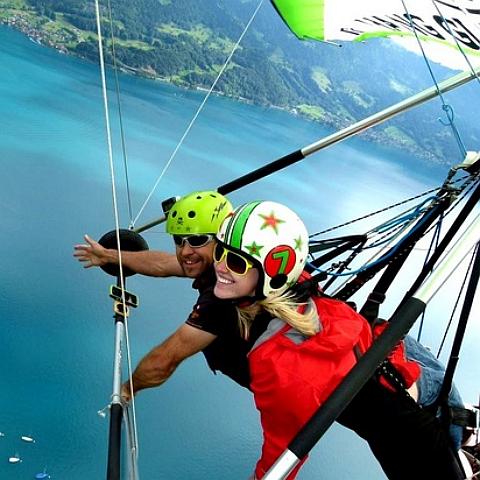Go HANG GLIDING
 Imagine soaring like a hawk thousands of feet above the ground. Although the air is somewhat chilly, the view is tremendous and the solitude is relaxing. You search for updrafts of air to keep you aloft so that you can enjoy this feeling for hours. This is the experience of hang gliding.
Imagine soaring like a hawk thousands of feet above the ground. Although the air is somewhat chilly, the view is tremendous and the solitude is relaxing. You search for updrafts of air to keep you aloft so that you can enjoy this feeling for hours. This is the experience of hang gliding.The hang glider's wing, called adelta wing or Rogallo wing, is an outgrowth of NASA engineerFrancis Rogallo's research on kites and parachutes in the 1960s. Rogallo had proposed the wing as a method of returning spacecraft to Earth. The delta-wing parachute was lightweight, durable and highly maneuverable. Later, John Dickenson, Bill Moyes, Bill Bennett and Richard Miller developed the Rogallo wing into the modern hang glider and launched an immensely popular sport shared by millions of people worldwide.
The hang glider is actually a triangle-shaped airfoil, a modified parachute (known as a flexible wing) made of nylon or Dacron fabric. The triangular shape is maintained by rigid aluminum tubes and cables and is designed to allow air to flow over the surface to make the wing rise. Newer, high-performance hang-glider designs use a rigid wing with stiff aluminum struts inside the fabric to give it shape, eliminating the need for supporting cables.
Flying a Hang Glider
To launch, the pilot must run down a slope to get air moving across the wing at about 15 to 25 miles per hour (24 to 40 kph). This movement of air over the surface of the wing generates lift, the force that counters gravity and keeps the glider aloft. Once a loft, gravity (the weight of the hang glider and pilot) pulls the glider back toward Earth and propels the glider forward, continually causing air to flow over the wing.
In addition to the horizontal movement of air, hang gliders can get lift from rising currents of air, such as columns of hot air (thermal lift) or air deflected upward by mountainous or ridge topography (ridge lift). As the hang glider and pilot move through the air, they collide with air molecules. The frictional force caused by these collisions is known as drag, which slows the glider down. The amount of drag is proportional to the airspeed of the hang glider: The faster the glider moves, the more drag it creates.
Hang-gliding Equipment
The basic equipment for hang gliding consists of the glider itself, the harness and a helmet. In addition, some pilots have instruments and an emergency reserve parachute.
Source: adventure.howstuffworks.com